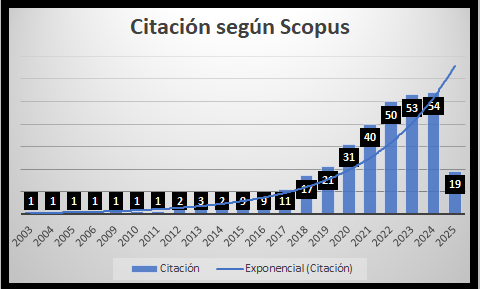Análisis retórico de las composiciones del género musical vallenato originario o juglar.
DOI:
https://doi.org/10.24265/cian.2024.n19.07Palabras clave:
análisis de contenido, paisaje, música, lenguaje, cultura caribeñaResumen
El vallenato es un género musical del Caribe colombiano, emparentado con la historia de esta región ubicada a orillas del Mar Caribe, interpretado originariamente por juglares usualmente campesinos viajeros que andaban a lomo de mulas a lo largo de la región del Magdalena Grande con un acordeón en sus manos. Los paisajes sabaneros y las fiestas de los pueblos eran fuente de inspiración para componer temas que con el tiempo se hicieron clásicos. La presente investigación tiene el propósito de analizar los componentes retóricos al interior de las narrativas del género vallenato originario, particularmente la presencia de elementos como la inventio, dispositio y elocutio. Para tal fin, el análisis de contenido se basó en un corpus a partir de la selección de algunos de los principales juglares de este género musical y, además, composiciones de estos intérpretes. Se encontró que el género vallenato originario está principalmente constituido por historias reales, en su mayor parte, contadas en forma de anécdotas por sus protagonistas. Plantean conflictos entre dos fuerzas, y utilizan su mayor fuerza expresiva para exponer la situación y los detalles de los hechos, pero principalmente, para reiterar los sentimientos y emociones del juglar narrador que, de paso, no siempre giran en torno al amor de una mujer sino también a la rivalidad profesional, todo con el paisaje de fondo del Caribe colombiano y las circunstancias propias de su contexto histórico.
Métricas
Descargas
Referencias
Aristóteles. (1999). Retórica. Editorial Gredos.
Abello, A., (2007). Estudios del Caribe en Colombia Entre la diversidad y la adversidad. Revista Brasileira do Caribe, VIII(15), 267-281. https://www.redalyc.org/articulo.oa?id=159114265012
Bermúdez, E. (2004), ¿Qué es el vallenato? Una aproximación musicológica. Ensayos. Historia y Teoría del Arte, 9(9), 9-62. https://revistas.unal.edu.co/index.php/ensayo/article/view/46296
Bonet, J. (2019). Reseña. Acordeones, cumbiamba y vallenato en el Magdalena Grande: Una historia cultural, económica y política, 1870-1960. Joaquín Viloria De La Hoz. Editorial Unimagdalena, 2018. Tiempo & Economía, 6(1), 191-194. https://revistas.utadeo.edu.co/index.php/TyE/article/view/1408/1412
Cano, M. (2021). Imaginarios sociales y conflictos en las expresiones de la música vallenata y la champeta en el Caribe colombiano. Análisis. Revista Colombiana de Humanidades, 53(99). https://doi.org/10.15332/-21459169.6803
Capdevilla, A. (2004). La retórica del objeto. Revistas Catalanas con Acceso Abierto (Raco). Temes de disseny, 21, 54-61. https://dialnet.unirioja.es/servlet/articulo?codigo=3433007
Castillo, A. (2010). Rafael Escalona: Encantos de una vida en cantos. Barranquilla. Colección Gases del Caribe, Ediciones La Cueva.
Cortés, J. (2017, diciembre). Rafael Escalona, Clásico del vallenato. Red cultural del Banco de la República. Revista Credencial Historia, 120. https://www.banrepcultural.org/bibliotecavirtual/credencial-historia/numero-120/rafael-escalona-clasico-del-vallenato
El Tiempo. Redacción Cultura. (2023, 26 de abril). Diez grandes juglares vallenatos de la historia. Redacción de cultura. https://www.eltiempo.com/cultura/musica-y-libros/los-10-juglares-vallenatos-mas-grandes-de-la-historia-613516
Escamilla, J., & Morales, E. (2004). La canción vallenata como acto discursivo. Revista latinoamericana de estudios del discurso, 4(2), 27-53. https://periodicos.unb.br/index.php/raled/article/view/33667
Gilard, J. (1987). Vallenatos. ¿Cuál tradición narrativa?, Huellas, 19, 59-67.
Gómez, B. (2004). De la intellectio a la elocutio: un modelo de análisis retórico para la columna personal. Revista Latina de Comunicación Social, (59), 8-12. https://doi.org/10.4185/RLCS-2004/02
González, A. (2000). Los estudios sobre música popular en el Caribe colombiano. En J. Martín-Barbero, F. López, & A. Robledo (Eds.), Cultura y Región. CES - Universidad Nacional de Colombia - Ministerio de Cultura.
Martín, A. (2014). La retórica clásica y la neurociencia actual: Las emociones y la persuasión. Revista Rétor, 4(1), 56-83. https://dialnet.unirioja.es/servlet/articulo?codigo=4751820
Mejía, G., & Espinosa, A. (2013). Aproximación al identitario de valores y expresiones del hombre y la mujer del Caribe Colombiano. Omnia, 19(2), 67-85. https://www.redalyc.org/articulo.oa?id=73728678006
Ministerio de Cultura (Mincultura). (2013). Plan especial de salvaguardia para la música vallenata tradicional del Caribe colombiano. Clúster de la cultura y la música vallenata. https://patrimonio.mincultura.gov.co/SiteAssets/Paginas/PES-El-vallenato,-m%C3%BAsica-tradicional-de-la-regi%C3%B3n-del-MagdalenaGrande/16La%20m%C3%BAsica-%20vallenata%20tradicional%20del%20Caribe%20colombiano%20-%20PES.pdf
Ministerio de Cultura (Mincultura). (2015, 1 de diciembre). El vallenato es ahora patrimonio cultural de la humanidad. https://www.mincultura.gov.co/prensa/noticias/Paginas/el-vallenato-es-ahora-patrimonio-cultural-de-la-humanidad.aspx
Pinzón, L. (2015). Lírica popular e identidad en el vallenato. Oralidad-Es, 1(2), 156-164. https://revistaoralidad-es.com/index.php/ro-es/article/view/25
Ramírez, L. (2023). Los juglares vallenatos. Panorama Cultural. Recuperado el 5 de marzo de 2024. https://panoramacultural.com.co/musica-y-folclor/4542/los-juglares-vallenatos
Sánchez, A. (2020). Mitología Vallenata. Editorial Universidad del Norte. https://editorial.uninorte.edu.co/gpdmitologiavallenata97895878923216363673c01d84.html
Santodomingo, G., & Rodríguez, H. A. (2017). Crónica y Vallenato: encuentro entre relatos. Universidad Del Norte. http://hdl.handle.net/10584/10970
Sociedad de Autores y Compositores (Sayco). (2018). Rafael Escalona. Biografías. http://sayco.org/rafael-escalona/
UNESCO, Patrimonio Cultural Inmaterial. (2015). El vallenato, música tradicional de la región del Magdalena Grande. Informe periódico. https://ich.unesco.org/es/USL/el-vallenatomusica-tradicional-de-la-region-del-magdalena-grande-01095?USL=01095
Urango, J. C. (2008). El vallenato como texto narrativo: análisis de «El Cantor de Fonseca», de Carlos Huertas. Visitas Al Patio, 1(1), 29-44. https://doi.org/10.32997/2027-0585-vol.1-num.1-2008-1570
Viloria, J. (2017). Un paseo a lomo de acordeón: Aproximación al vallenato, la música del Magdalena Grande, 1870 - 1960. Memorias. Revista Digital de Historia y Arqueología desde el Caribe, (33), 7-34. https://www.redalyc.org/articulo.oa?id=85553878002
Publicado
Número
Sección
Licencia
Derechos de autor 2024 Giuliano Dante Seni

Esta obra está bajo una licencia internacional Creative Commons Atribución 4.0.
En caso de que el manuscrito sea aprobado para su próxima publicación, los autores conservan los derechos de autor y ceden a la revista el derecho de la publicación, edición, reproducción, distribución, exhibición y comunicación en el país de origen, así como en el extranjero, mediante medios impresos y electrónicos en diferentes bases de datos.
Para que quede constancia de este procedimiento, el autor debe llenar los siguientes formatos:
Formato 1 - Datos de autores.
Formato 2 - Declaración jurada sobre originalidad y autorización para la publicación de artículos.
Formato 3 - Conformidad con la ciencia abierta.









2.png)


















